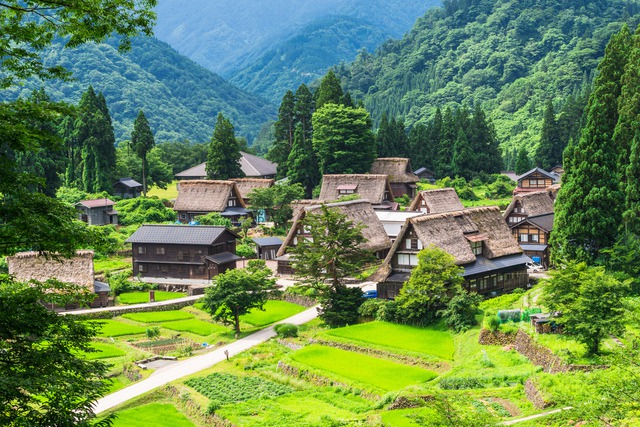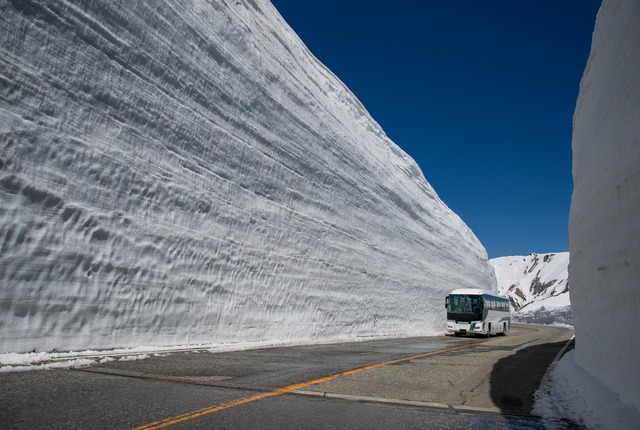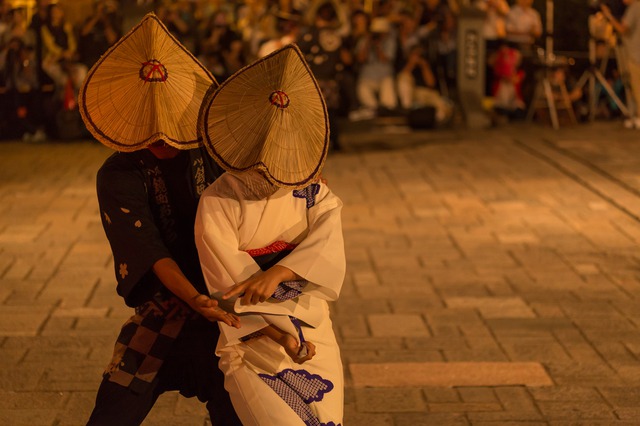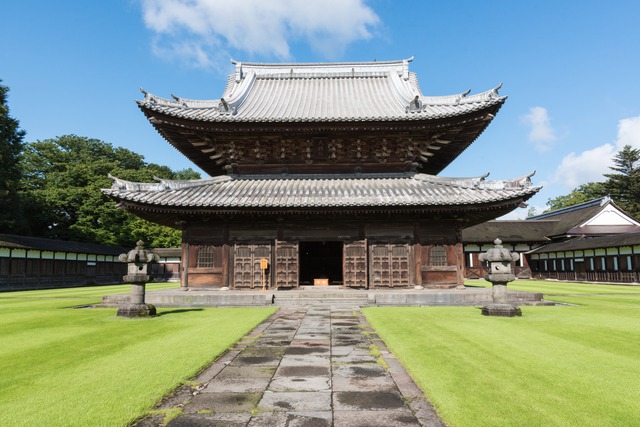
You Must Check Them Out! Top 5 Sightseeing Spots in Hokuriku’s Toyama
There are many must-visit tourist spots in Toyama Prefecture, which is part of the Hokuriku region. Below are some of the best sightseeing destinations in Toyama where you can enjoy beautiful sceneries, such as the mountains in the Northern Alps and the Gassho-zukuri no Shuraku (village of houses with steep thatched roof) that is a World Heritage Site.
This post may contain affiliate links. If you buy through them, we may earn a commission at no additional cost to you.
1. Gokayama (Ainokura/Suganuma Gassho-zukuri Shuraku)
Gokayama is a place that has two gassho-zukuri villages that are registered as World Heritage Sites. The term “gassho-zukuri” refers to an architectural design of houses characterized by thatched roofs that only exist in this area and in Shirakawago in Gifu today, so it is very precious. At Ainokura Gassho-zukuri Shuraku, there remain 23 gassho-zukuri houses. Along with the museums and souvenir shops scattered in the area, you will also get to fully enjoy a tranquil landscape surrounded by mountains. Meanwhile, the Suganuma Gassho-zukuri Shuraku has nine dwellings intact. Here, you can see the landscape from ancient times that spread along the river, as well as tour museums and other spots where you can experience history and tradition. At the adjacent Gokayama Gassho no Sato, there are gassho-zukuri cottages were you can witness traditional living, too.


2. Tateyama Kurobe Alpine Route
Tateyama Kurobe Alpine Route is one of the world’s leading mountain sightseeing routes. It traversed the Northern Alps with mountains that have an altitude of 3,000m. The 37.2km mountain pass from Tateyama Station in Toyama and Ogizawa Station in Nagano is connected by six modes of transport, including cable car, trolleybus and ropeway, and you can enjoy many scenic spots along the way. Some of the biggest highlights in this route are the Bijodaira that houses a primeval forest filled with Tateyama sugi (Tateyama cedar) and beech trees aged at least 1,000 years old, the Midagahara with a beautiful marshland, and the Kurobe Dam, which is the tallest dam in Japan. From mid-April to late-June each year, you can also observe up close the huge snow walls that reach as high as 20m. The route is open from mid-April through until late-November.


3. Etchu Yatsuo
Located in the western part of Toyama City, Etchu Yatsuo is a town that is popular even among foreign tourists as it lets them see an area that has retained the original look of the Edo period (1603 – 1868). The Suwamachi Hondori, which has been listed as one of the Top 100 Roads in Japan, is paved with cobblestones and lined with buildings characterized by white walls and lattice doors. From September 1st through 3rd each year, the folk festival called Owara Kaze no Bon is held to pass to the present generation the Etchu Owara that has been danced for over 300 years. Further, the Yatsuo Hikiyama Festival is held on May 3rd, giving visitors a glimpse to a parade of splendid floats that gather the best traditional in the area. The floats can be observed throughout the year at the Etchu Yatsuo Tourist Center (admission fee is 500 JPY for adults).


4. Kurobe Gorge
The Kurobe Gorge is a picturesque spot with a V-shaped gorge that runs deep. It is a popular spot where you can enjoy breathtaking cliffs and overwhelming natural beauty. To enjoy the gorgeous gorge, you need to get on the Kurobe Gorge Railway (3,420 JPY round-trip for adults) that will dash across grand nature while passing through several bridges and tunnels (this pass is not open from December through April). The train journey that will have you weaving through valleys is an endless series of spectacular sights! It takes about an hour and 20 minutes to get to the end point from the starting point. You can get off at any station on the route, so it is recommended that you take your time while enjoying the beautiful gorge, as well as the footbaths, open-air baths and other spots.


5. Zuiryuji Temple
Situated in Takaoka City, Zuiryuji temple is highly regarded as a Zen temple building in the early Edo period. It is famous for its magnificent arrangement that will overwhelm you with its splendor and elegant beauty. The Sanmon (temple gate), Butsuden (Buddhist hall) and Hodo (lecture hall) have been designated as national treasures, while the Somon (main gate), Zendo (meditation hall), Okuri (large living quarters), Osado (great tea house) and Kairo Santo (main corridor) are registered as important cultural properties. This temple holds the Yoru no Inori to Daifuku-ichi (Night of Prayer and Daifuku Market) in early February and early August, and the nighttime illumination at the Monzen Ichi in late April. The Sanmon, Butsuden and Hodo magically float in the night sky, and the temple grounds are surrounded by a solemn atmosphere.

As shown in this article, Toyama is filled with spots where you can enjoy rich nature, beautiful architecture and nostalgic townscapes. So, try to visit it sometime!
The information in this article is accurate at the time of publication.




